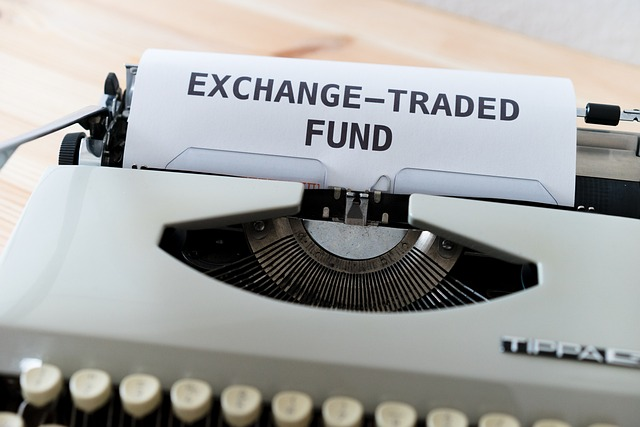Table of Contents
- What is Diversification?
- Diversification
- Why is it important to diversify your investments?
- The potential risk
- Diversification explained
- The 4 primary components of a diversified portfolio
- Stocks
- Bonds
- Cash
- Commodities
- Benefits of diversification
- How diversification can help reduce the impact of market volatility?
- Portfolio diversification examples
- How to build 3 Funds
In this post, I want to talk about the concept of how to diversify your investments or portfolio diversification,
what it means, and whether you should be diversified.
there are many articles on the internet that talk about diversification and that you need to be diversified.
more info on how to build your portfolio: Building Portfolio from scratch
What’s diversification?
Diversification
First of all, what’s diversification? Diversification is about spreading your risk.
if you have a large investment portfolio or a large investment bank, you may want to spread your risk.

In case something happens, you want to be diversified and spread your risk.
diversification is all about spreading your risk.
“Don’t put all your eggs in one basket?”
You’ve probably heard this a lot: you shouldn’t put everything you’ve into one area.
If one or two baskets fall, you won’t lose ALL your eggs.
So if eggs represent your money, baskets represent the different asset classes.
Asset classes are simply different types of investments, like stocks, bonds, commodities, and cash.
Why is it important to diversify your investments?
Diversification has a primary goal. Do you ever think it would be okay to throw everything out the door? Imagine if your basket was one stock.
You must diversify your investments, putting all your funds into one or a number of firms and they could become incredibly dangerous,
if he goes bankrupt or his business is suffering.
The potential risk
The potential risk associated with investing can be intimidating to some. However, there are some methods you can use to mitigate your risk.
One way to mitigate risk is through the strategy of diversification, (diversify your investments)
a risk management technique that increases the variety of investments in your portfolio. In terms of certain factors like asset classes and maturity dates.
The idea is to spread your risk by investing in different types of assets.
So if you invest in assets with different risks, historically you’re less likely to lose your investment completely.

Diversification explained
If you invest entirely in shares of a single company,
there’s a chance you’ll reach your goal quickly if it does well.
But if it goes down unexpectedly, your entire investment could be affected.
And you lose more money than if you’d taken more time and spread the risk by investing in stocks of different, unrelated companies.
In addition, it’s also beneficial to invest in different asset classes. For example, you can invest in a mix of stocks, bonds, and cash, rather than relying on just one type of security.
This method of diversification is related to another investment strategy: asset allocation and diversification, whose goal is to balance risk and return.
You do this by dividing your portfolio among different asset classes or types according to your risk tolerance and investment horizon.
For example, a new investor is more willing to take a higher risk but is less likely to lose the investment.
On the other hand, an investor who’s retired has different goals. And they have a lower risk tolerance for investing.
Although these tools can mitigate investment risk, it’s important to remember that risk cannot be completely eliminated.
The 4 primary components of a diversified portfolio
“Diversification of investments across asset classes is crucial to risk mitigation.”
Stocks – (diversify your investments)
Let’s look at stocks.
Investors buy stock to acquire partial ownership of a company and share in that company’s profits.
Stock prices are subject to the volatile ups and downs of the stock market.

When it comes to earning consistent returns in your portfolio, stocks have historically produced the highest returns.
On the other hand, heavy losses can also occur, and the risk to your portfolio is correspondingly high.
If your portfolio consists entirely of stocks, you could outperform inflation, but market downturns could also affect your account balance.
Bonds – (diversify your investments)
Bonds are issued by an entity such as a government or a corporation and have the following characteristics.
In return for your investment, the issuer of the bond pays interest over the life of the bond.
When the bond matures, you get your original investment back.
However, the government or company may default, meaning it may not make the interest payments or return your principal to you.
Bonds usually have less risk than stocks and a little more than cash, and the return looks about the same- more than cash, less than stocks.
Cash – (diversify your investments)
Holding cash in a portfolio doesn’t mean investments such as short-term money market accounts, and checking and savings accounts.

cash means non-equity investments that are liquid and easily accessible.
But cash isn’t without risks.
When inflation rises, the purchasing power of cash is lost.
If your portfolio is all cash, you’ll have a hard time keeping up with rising prices.
Commodities – (diversify your investments)
Investing in commodities means investing in the price of oil, gold, cows, or corn.
When you buy commodities, you speculate that the price of the commodity is likely to be higher in the future.
But since most of us don’t have room to store millions of barrels of oil, and a herd of cows makes a really big mess, most investors use futures contracts or shares in commodity funds to add this asset class to their portfolio.
Commodities may move in lockstep with stocks, but they also react to the general state of the economy and inflation.
There are other asset classes, like real estate and cryptocurrency but these are the four most common classes used to create diversified portfolios.
Each asset class moves in response to different market conditions and for different reasons.
The risks each class faces are different, as are the returns each class offers.
Ideally, if one asset class doesn’t do well, others do, and that can protect your portfolio from a crash that would break all your eggs.
Benefits of diversification
The first is that you can benefit from the growth that a global equity portfolio can provide over the long term.
Your capital will be invested in a variety of opportunities around the world, in exciting companies that are at the forefront of trends like the digital revolution and biotechnology that simply don’t exist in the marketplace.
But not only do you benefit from high growth opportunities, but you also diversify your investments across continents, companies, and currencies.

This risk diversification protects you from a country or company-specific shocks or downturns and also allows you to invest your money in a hard currency, the US dollar.
During this time your assets are physically held in a tax-neutral offshore financial center, giving you peace of mind and financial security.
When you invested your wealth globally, you harnessed the power of diversification and compound interest over a longer period of time without having to put in more work.
your wealth grew just because you made a smart move and waited for their understanding of basic investment principles.
How diversification can help reduce the impact of market volatility?
Diversification does not increase returns. It aims to minimize volatility in a portfolio.
choosing a relatively risky investment can lead to potential losses when volatility strikes and prices fall, causing you to panic and sell.
If you choose an investment with too little risk, even in good times it may not produce the return you hoped for because it’s not growing enough to counteract the effects of inflation, which reduces its value.
Experienced investors know that successful long-term investing depends on the right mix of assets. That’s why they diversify their investments across different types of assets and geographies, mixing cash, bonds, mutual funds, stocks, real estate, and other investment vehicles to achieve a profile that matches their risk tolerance.
if you don’t have the time or knowledge to manage these investments yourself, you can just buy a fund to do it for you.
Experienced investors know that an appropriately diversified portfolio minimizes the impact of any one type of investment and can even help you take advantage of opportunities, so experienced investors aren’t tempted to chase the market.
Portfolio diversification examples
Typically diversified investors use various types of investments to minimize risk from market volatility. In essence, the allocation of a portfolio is the amount of money that can be placed in various investment categories.
An example of the three-fund portfolio, also known as the lazy portfolio- is a very popular and low-maintenance way to structure an investment portfolio, whether for a retirement account, a taxable account, or just general investing.
randomly picking stocks because you know the brands are probably not the best long-term strategy when it comes to investing. I’m not saying it’s bad, but I wouldn’t recommend it for the long term.
the three-fund portfolio is, simply put, a portfolio that consists of three different asset classes: U.S. stocks, U.S. bonds, and international stocks.
Low-cost Index funds portfolio
The 3 funds are low-cost index funds. So if you don’t know what an index fund is, it’s essentially a basket of stocks that tracks or mimics an index, for example, with these three index funds, we’ll track U.S. stocks, U.S. bonds, and international stocks.
the beauty of this is that it provides great diversification while matching the overall market returns historically and then it also prevents you from making emotional or stupid trading mistakes.

There are several benefits for the 3 funds portfolio, number one is diversification.
Number two is index funds have super low expense ratios. Expense ratios are just a fancy financial term for fees and mean that you typically pay a financial advisor 1% per year on assets under management vs 0.09% when buying idex funds.
Number three, once we’ve established the various criteria of how much we want to have in terms of U.S. stocks, U.S. bonds, and international stocks, you can easily adjust that number or weighting to meet your allocation goals.
How to build 3 Funds
The most important factors are usually your age, the time frame in which you want to invest, and also the risk you want to take
Typically three 3 types of portfolios:
The first is an 80:20 allocation, i.e. 80% stocks, and 20% bonds.
The second allocation is three equal funds, i.e. 33:33:33, which are U.S. international stocks and U.S. bonds
The third allocation is 20:80, i.e. 20 stocks and 80 bonds, which is definitely the most conservative of all.
I think that less is more. This is a great way for beginners because it’s not intimidating and has all the benefits I mentioned.
it’s low maintenance and easy to rebalance if you use these three funds, you don’t necessarily have to live in the markets, you can just set it and forget it and rebalance it maybe once every six months.
This is a great start for anyone who wants to start investing because it’s one of the easiest ways.
